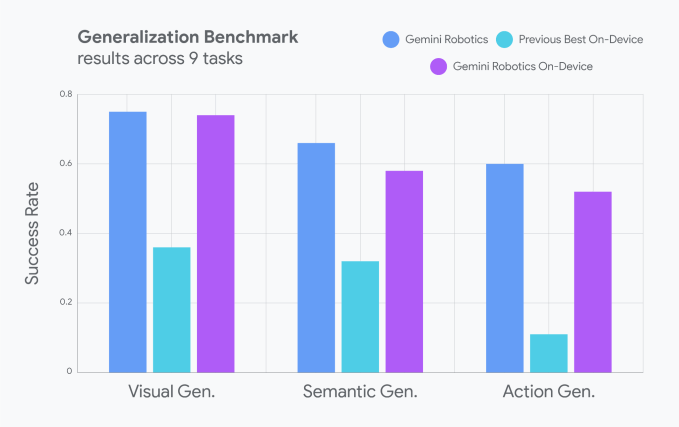In a groundbreaking move, Google DeepMind has unveiled Gemini Robotics On-Device, a cutting-edge language model that enables robots to execute tasks offline without the need for a stable internet connection. This latest iteration builds upon the success of the initial Gemini Robotics model, which was introduced earlier this year in March.

Gemini Robotics On-Device empowers developers to control and customize a robot's movements using natural language prompts, catering to diverse needs and applications. The model's performance is on par with its cloud-based counterpart, Gemini Robotics, and it outperforms other on-device models in general benchmarks, although Google has not disclosed the specific models it outperformed.
In a captivating demo, Google showcased robots equipped with the local model performing everyday tasks such as unzipping bags and folding clothes. The model was initially trained for ALOHA robots but has since been adapted to work seamlessly with a bi-arm Franka FR3 robot and the Apollo humanoid robot by Apptronik.
The bi-arm Franka FR3 robot demonstrated remarkable adaptability by successfully handling scenarios and objects it had not previously encountered, such as assembly tasks on an industrial belt. This showcases the model's ability to learn and adapt to new situations.
In addition to the Gemini Robotics On-Device model, Google DeepMind is also launching a Gemini Robotics SDK. This software development kit allows developers to train robots on new tasks by showing them 50 to 100 demonstrations of the tasks using these models on the MuJoCo physics simulator.
The robotics industry is witnessing a surge of interest from AI model developers. Nvidia is working on a platform to create foundation models for humanoid robots, while Hugging Face is not only developing open models and datasets for robotics but also actively working on robots themselves. Furthermore, RLWRLD, a Korean startup backed by Mirae Asset, is focusing on creating foundational models for robots.
The introduction of Gemini Robotics On-Device marks a significant milestone in the world of robotics, enabling more efficient and adaptable robots that can operate independently without relying on a constant internet connection. As AI model developers continue to explore the potential of robotics, we can expect even more innovative solutions and advancements in the near future.